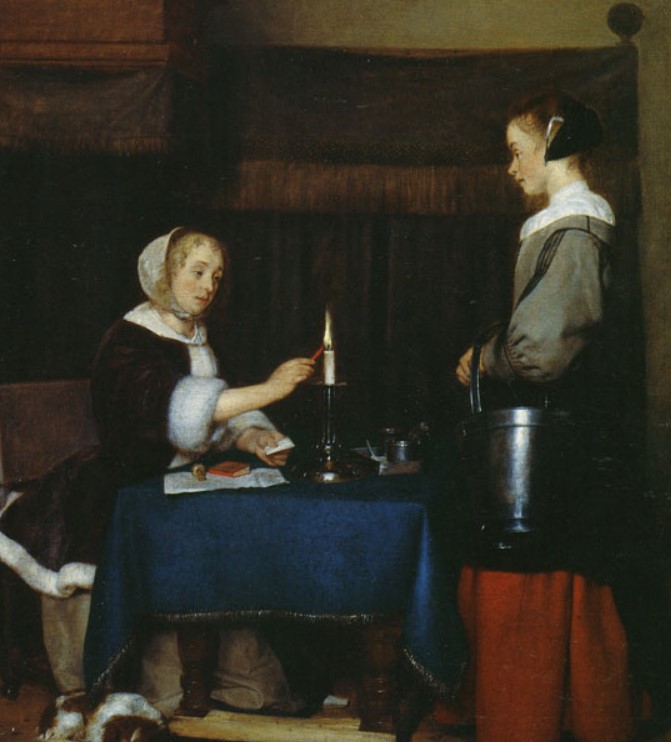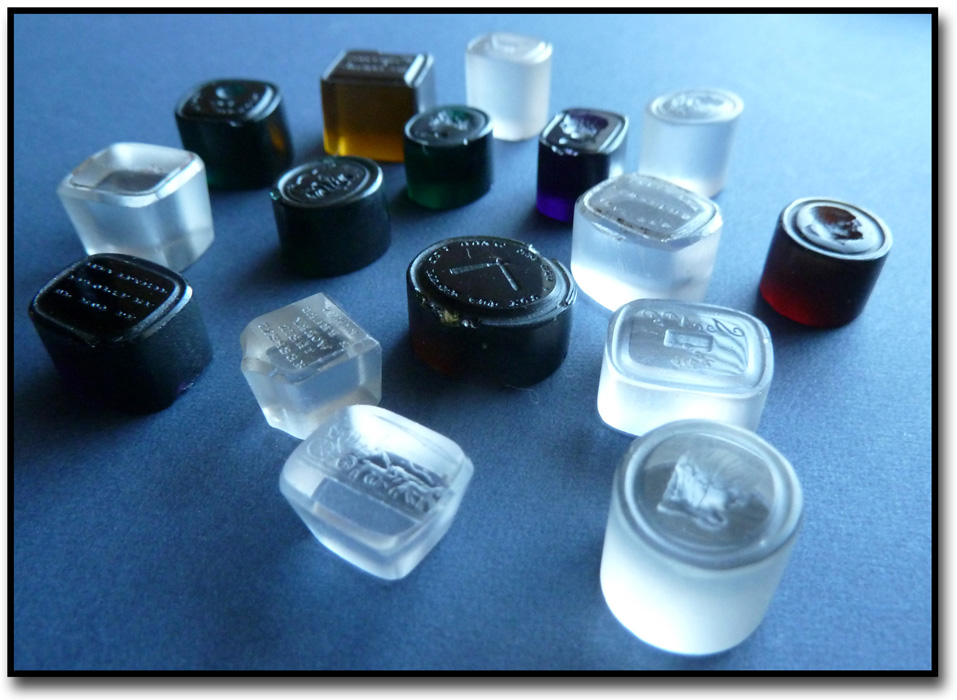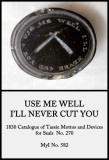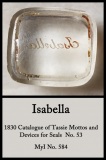
The term “Tassie” usually refers to one of the engraved gems or an impression of one produced by James Tassie (1732-1799) or, William Tassie (1777-1860), his nephew. (Incidentally, to some tassie can also be a cup or goblet (Scottish) or a Southern Christmas cookie or dessert.)
In the present instance I am using it as a reference to a group of paste impressions of engraved gems produced by William Tassie in the first part of the nineteenth century in London.
They were “in fashion” to seal messages or letters before the use of glue on envelopes became common in the late 1830’s.
The widespread use and popularity of seals, especially Tassie seals, is attested to in a letter from John Keats to Fanny, his younger sister, dated 13 March 1819:
“…On looking at your seal I cannot tell whether it is done or not with a Tassi – it seems to me to be paste—As I went through Leicester Square lately I was going to call and buy you some, but not knowing but you might have some I would not run the chance of buying duplicates—Tell me if you have any or if you would like any—and whether you would rather have motto ones like that with which I seal this letter; or heads of great Men such as Shakespeare, Milton &c—or fancy pieces of Art; such as Fame, Adonis &c—those gentry you read of at the end of the English Dictionary.”
This above excerpt was taken from “THE LETTERS OF JOHN KEATS 1814-1821” Volume Two, 1958, edited by Hyder Edward Rollins

An article entitled “Christmas Day 1818” by Aileen Ward describes in substantial detail Keats’ use of and (yes) emotional attachment to Tassie seals. Much of the story revolves around a Tassie seal of a lyre with broken strings which John Keats may have received from his love, Fanny Brawne, on that Christmas Day (if you go there, the good part about seals starts on page 22). The article was included in the Keats-Shelley Journal Vol. 10 (Winter, 1961), pp. 15-27 published by: Keats-Shelley Association of America, Inc.

Details of a few seals are shown below. Most are described in Tassie’s “Catalogue of Devices and Seals” of 1830, which included almost 1600 items. They were usually small paste rectangular or oval cubes about ¼” to ½” thick and about ½” across. They were made in this shape, thicker than the usual engraved gem, so they could be used easily as a seal without the need for an attached handle.
The first eight seals were part of a group I recently acquired from Lauren Markland of Clayton Antiques located in Williamsburg, VA. They had been in a collection of her father and (I think) she was glad to see them find a good home.







